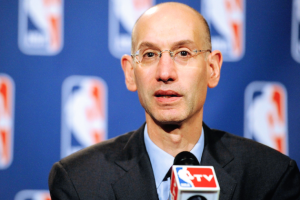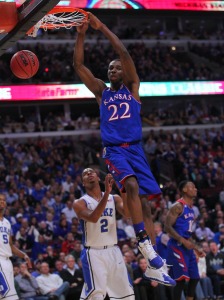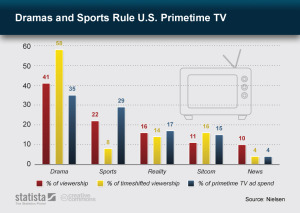
NBA commissioner Adam Silver wants to increase the NBA’s age limit — even though it seems to be financially unsound
NBA commissioner Adam Silver recently reiterated his goal of raising the league’s draft eligibility from the age of 19 to 20 in the next collective bargaining agreement.
For several reasons, this doesn’t make economic sense for the NBA, and it escapes me why the commissioner would push for such a resolution.
The current rules force high-profile players to attend college for a minimum of one season — or in rare cases like Brandon Jennings, play in Europe for a year — before qualifying for the draft.
This has lead to an influx of talent for the NCAA that wasn’t seen before the age limit was put in place in 2006. Stars like Kevin Garnett, Kobe Bryant, and LeBron James were able to skip playing in college because NBA teams were willing to bet on their talent and pay them immediately.
Proponents of the age limit will also point to notorious preps-to-pros flops like Kwame Brown as a reason athletes need to attend college to “grow” as people and players — while also arguing the incubation of talented players in college helps make them more marketable once they become professionals.
It’s flawed logic, even if it were true, because it results in the NBA propping up a direct competitor. ESPN scored their highest college basketball ratings in the network’s history last year, with 1.4 million viewers tuning in on average. Their ratings have increased six percent each of the past two seasons.
The NBA shouldn’t view this as a positive. Unlike in football, professional and college basketball are played on the same nights. They’re competing for the same viewers, and the NBA shouldn’t do anything to influence that finite market to watch a different product.
And yet, that’s what the NBA age limit does. Last year’s NCAA ratings increased because of a well documented collection of high school seniors like Jabari Parker and Andrew Wiggins going to college for one season. If NBA teams were allowed to draft them instead, there would have been much less incentive for basketball fans to tune in for random college games on ESPN during the year.
At the same time, the NBA saw its ratings slide five percent last season. The Finals rematch between the Spurs and Heat featured the most high profile American athlete, and ratings still fell one point.
The age restriction runs counter-intuitive to what the league’s goals should be: to collect the greatest amount of talent, put out the best product, and give consumers every reason to watch professional basketball rather than college.
As we discussed in class, sporting events carry more cache to advertisers now because they are live, making it more likely their ads will be watched. The increase in college ratings is more money in the NCAA’s coffers, and the NBA would be best served having curious fans tune into their product to see how the young players will fare.
It would behove the NBA financially to consider removing their age restriction entirely, rather than increasing it.



Leave a Reply
You must be logged in to post a comment.